Where does healthy food come from? For a long time, we thought it best to choose from the perimeter of the supermarket. The backyard garden seems to be a better answer these days. We can be assured that our home-grown foods are not doused with glyphosate.
The truth is there is a great big world out there and it is full of nutrient-dense wild food that is grown without fertilizer and pesticides and has been grown that way for eons. This harvest is the prize of the forager.
If our front yards and adjacent woods are filled with food and natural medicine, why do so few people take advantage of nature’s true harvest? Some of it has to do with plant identification and understanding.
A forager’s much larger barrier to entry is not having a proper toolkit to step into the woods.
A Quick Reminder
Before we get into the specifics about where and how to find these plants and mushrooms, we want to be clear that before ingesting any wild plant or mushroom, it should be identified with 100% certainty as edible by someone qualified and experienced in mushroom and plant identification, such as a professional mycologist or an expert forager. Misidentification can lead to serious illness or death.
All plants and mushrooms have the potential to cause severe adverse reactions in certain individuals, even death. If you are consuming wild foragables, it is crucial to cook them thoroughly and properly and only eat a small portion to test for personal tolerance. Some people may have allergies or sensitivities to specific mushrooms and plants, even if they are considered safe for others.
The information provided in this article is for general informational and educational purposes only. Foraging involves inherent risks.
Why the Forager’s Toolkit
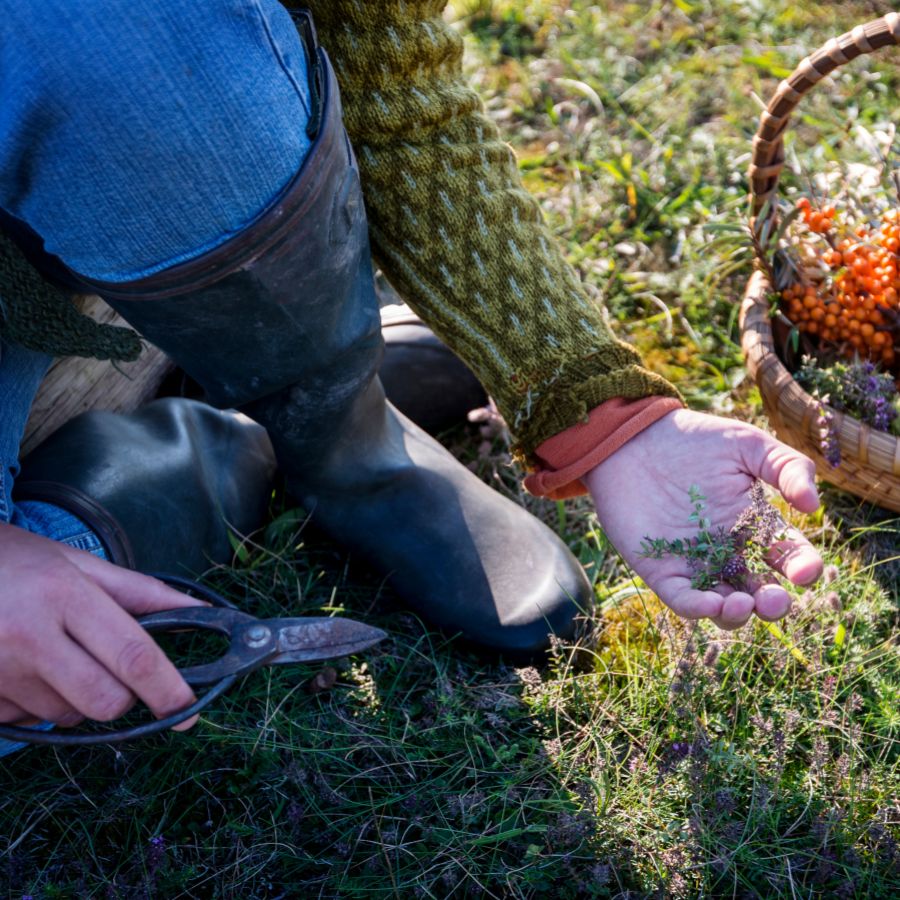
When you enter the woods empty-handed your foraging adventure typically becomes another walk in the woods. You might spend some time identifying plants, but the goals you showed up with are often left behind.
A forager’s tool kit makes harvesting wild foods easy, safe, and something you can do time and time again.
You’re going to tread through woods, off paths, and near streams. You will be doing battle with vines, thorns, bugs, poison ivy, and the elements. You gotta come prepared or you will leave empty-handed.
Foraging Bag
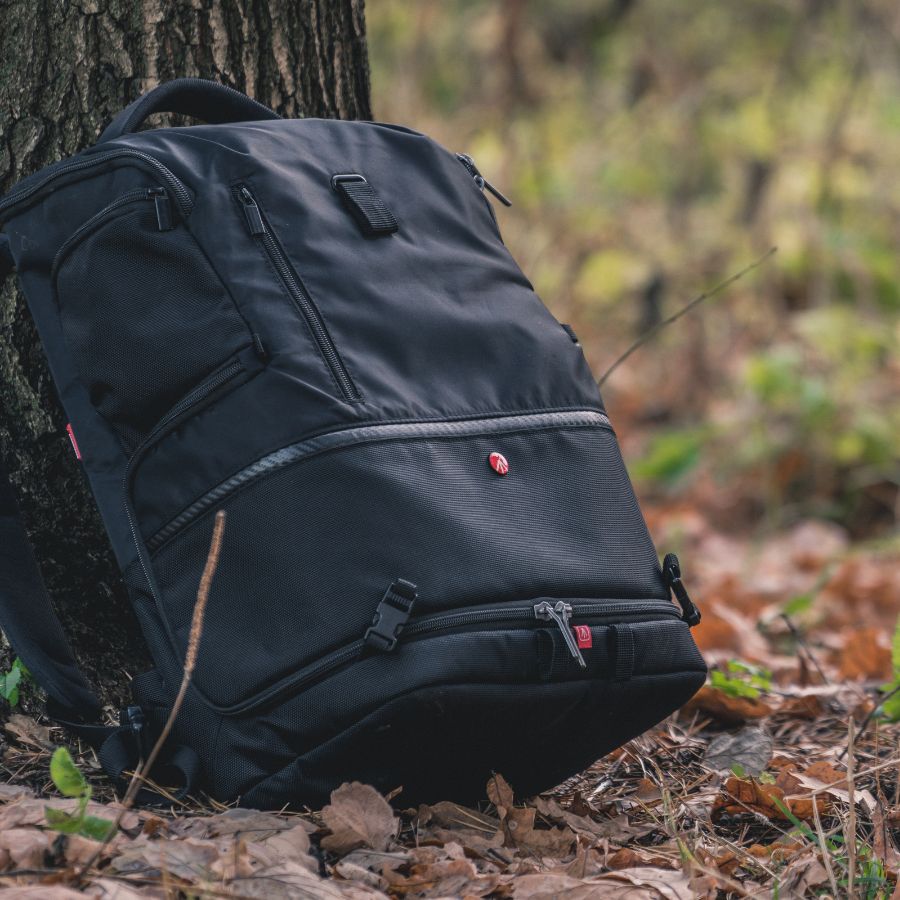
The foraging bag can hold some of your tools and your harvest. I would argue that the foraging bag is the most important piece of gear you take on an adventure. Without it, you are left to carry only what can fit in two palms.
Even a medium-sized foraging bag can hold a substantial amount of fruits, nuts, and roots. If you are harvesting delicate leaves like spring dandelion, then you will be able to carry all that you could ever wish to bring home.
Hori Hori

The hori hori is a Japanese “multitool” created during the Edo period to perform many tasks in the garden. It was used for planting, harvesting, weeding, and even extracting root vegetables.
You can see how it would perform well for the forager. The modern hori hori looks more like a shovel and many models even have a serrated edge on one side.
They range in price but can be had for as little as $25.
Kitchen Scissors

The kitchen scissor is an indispensable foraging tool. There are few tools that can snip delicate leaves and herbs the way scissors do. Without them, you are sawing with a knife or just ripping.
Ripping at young leafy plants like plantain or burdock can cause the whole plant to rip from the ground. If you do that enough, you will spoil an entire foraging spot. So, use a little finesse and bring along the kitchen scissors.
Bushcraft Knife
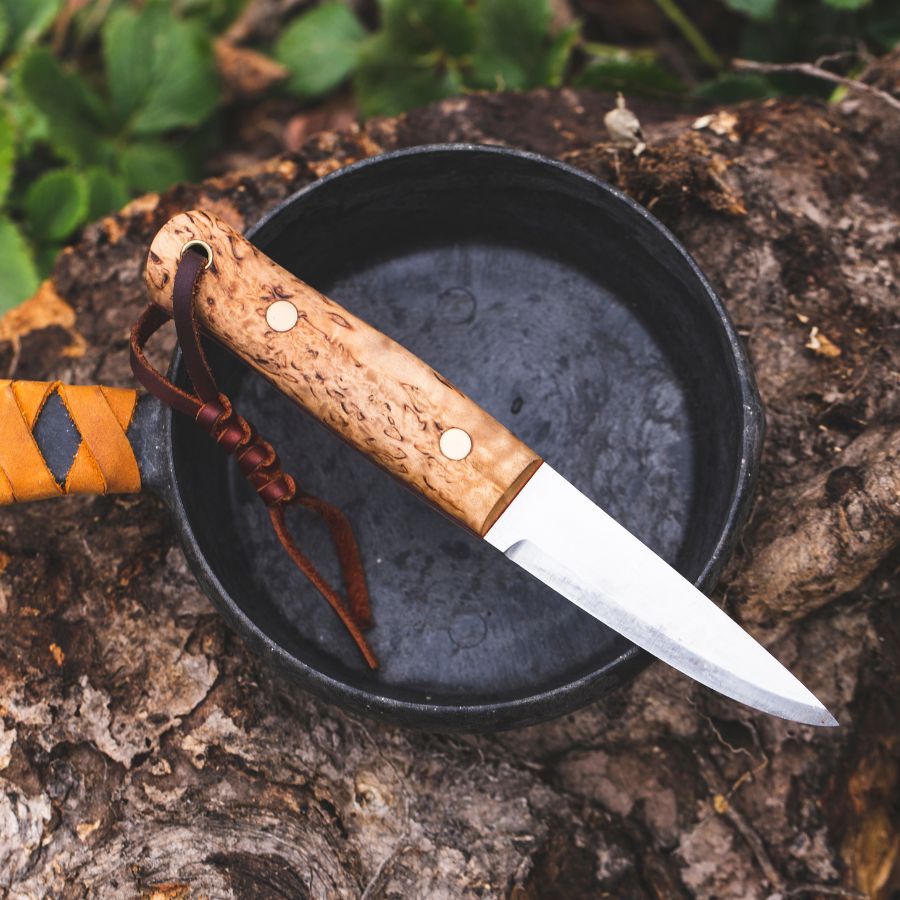
You should take a knife into the woods with you to forage. If you are going to start spending time in the woods, it is worthwhile to invest in a high-quality bushcraft knife. This is the chosen tool of wilderness survivalists.
With so many different brands and types of knives on the market, what makes a good bushcraft knife?
The Five Qualities of a Bushcraft Knife
- Full Tang – This is a very strong knife where the blade and the handle are all one piece of metal
- High Carbon Steel – This type of steel is very hardy and resistant to wear
- 90 Degree Spine – This type of spine allows you to strip bark or process plant materials without using your blade’s edge. You can also use this spine to strike a ferro rod for fire-starting
- Pommel – The pommel at the bottom of the knife is a great tool for opening nuts, or any task that requires blunt force.
- Sheath – If you can carry your knife on your belt, it is one less item in your bag.
You might not be out there foraging for survival but having a good knife and getting comfortable with it is important. Knife skills are important inside and outside the home.
Gloves

Unless you are in love with itchy rashes and stabbing thorns, then you will want some quality gloves. There is a balance that you should look for in foraging gloves. Something, too bulky, is going to hinder your ability to use your fingers on delicate plants.
If the gloves are too flimsy, the thorns are going to get right through. I am a big fan of nitrile-coated gloves. These are a great fit for foraging most things. Whether you are feeling your way through brush or digging up roots, gloves will protect your hands.
If you opt for no gloves, then you will leave food behind. There will be berries and plants tucked precariously in places that you won’t want to sacrifice your skin for. With gloves, you don’t have to make that choice.
Magnifying Glass
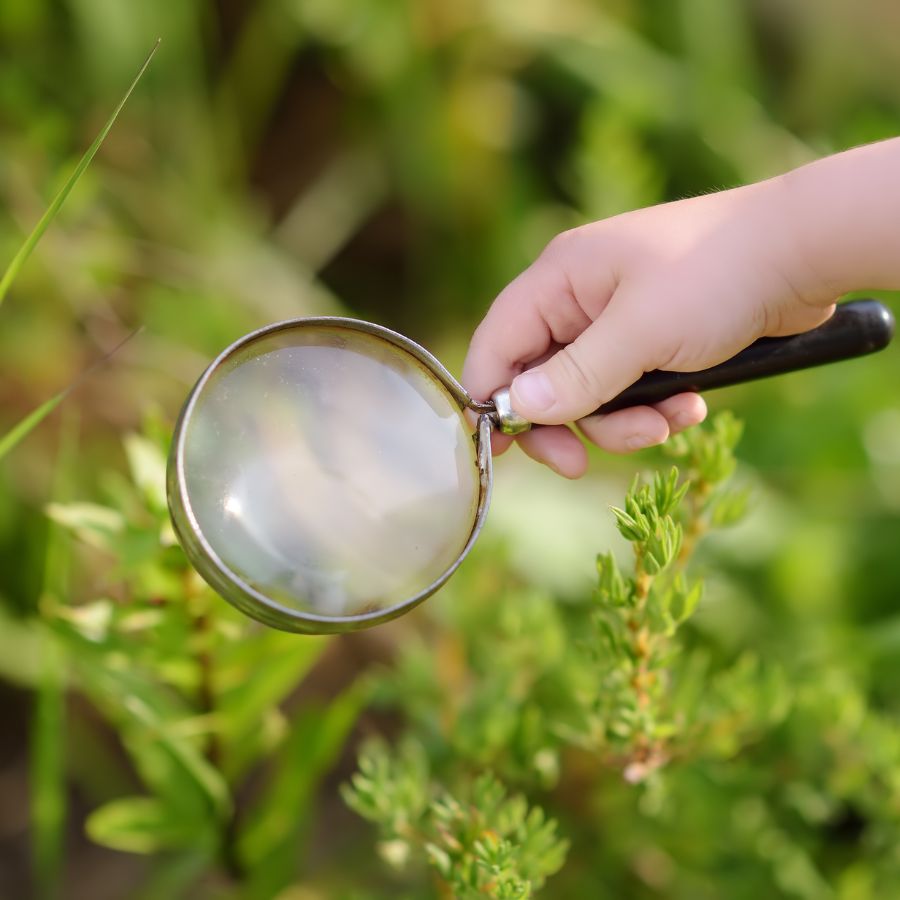
Some leaves and fruits are tiny! They have ridges or markings on stems and leaves that are much easier to discern with a small magnifying glass. You do not need to break the bank on this one. A simple plastic magnifier will go a very long way for you.
This can also double as a fire starter in the midday sun!
5-Gallon Bucket
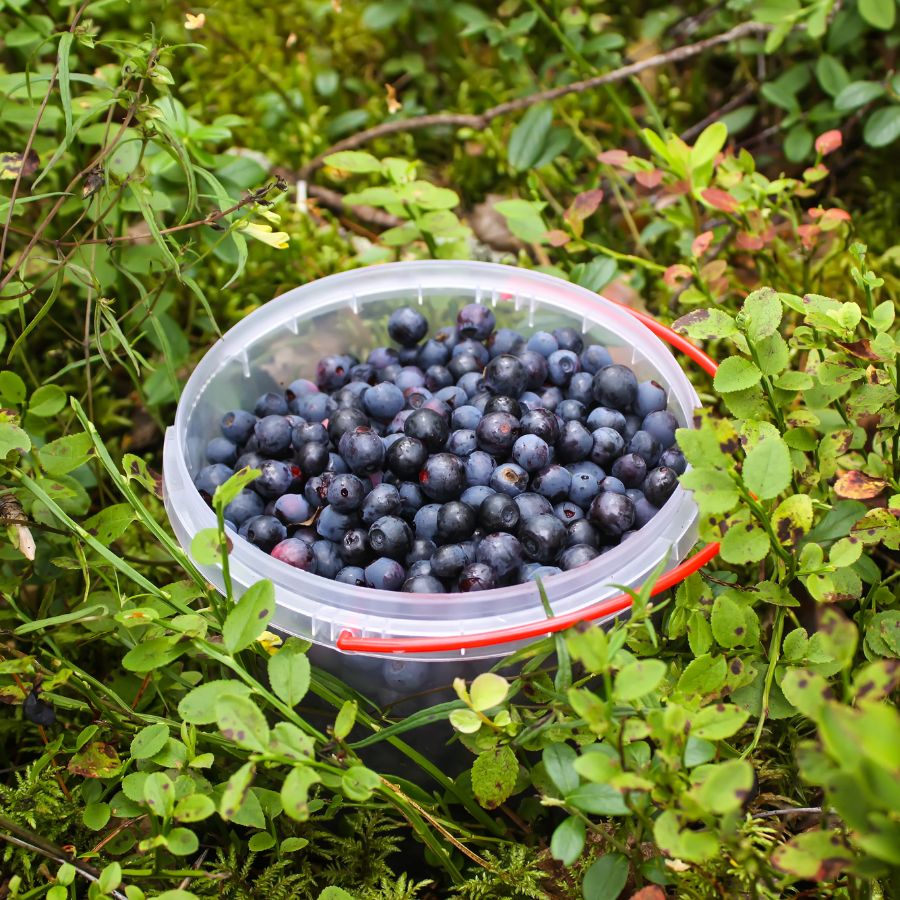
The 5-gallon bucket is not necessary for every adventure, but when you set out for certain foods, you must come with more than just a foraging bag. Hand fruits like apples, peaches, pears, plums, are all better harvested by the bucket.
Black walnuts are dense and have a staining substance in their flesh. Chuck them into 5-gallon buckets and save your foraging bag!
If you are going for a big haul of roots like sunchoke, then bring along the 5-gallon bucket, too.
Add a Reference

There is no need to leave it all up to memory. Find a quality reference manual to carry into the field to double- and triple-check your harvest.
Dangerous look-alikes to certain plants are best identified with a full-color wild edible plants book in hand. To try and remember the striations on a stem or the number of tips on a single leaf is foolish when such manuals can be easily carried.
Peterson’s Field Guide to Wild Edible Plants is a great example of a book that is small and full-color. This is the book I learned to forage on.
Foragers Survival Kit
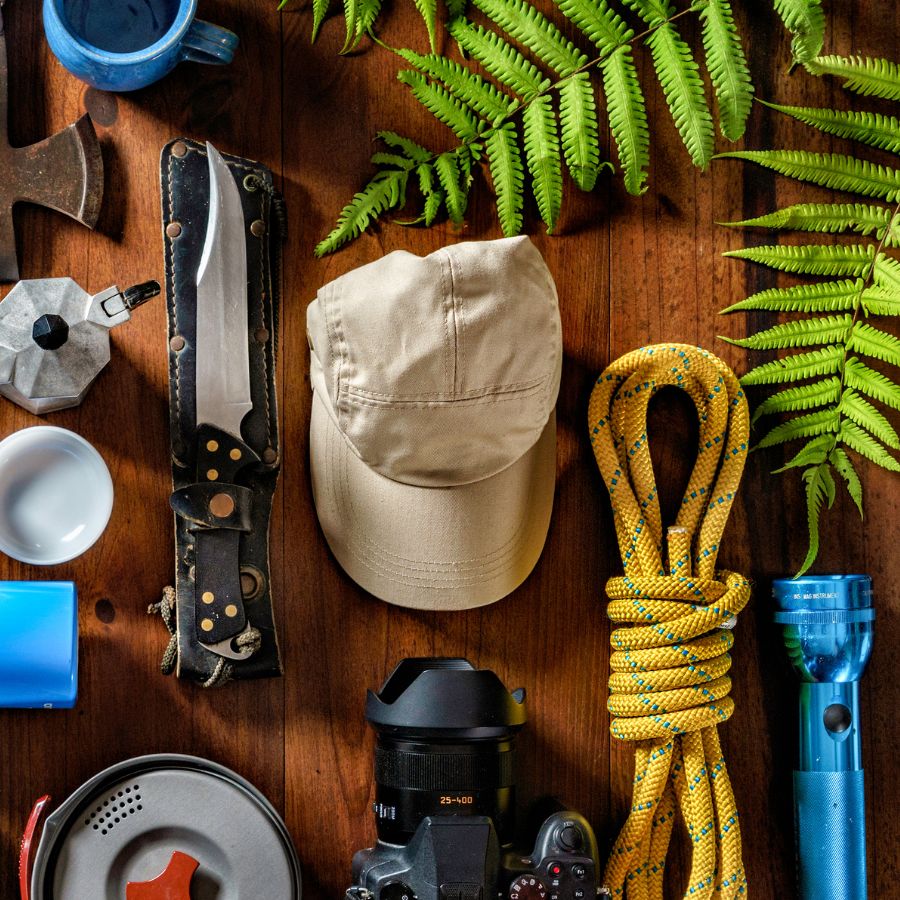
When you are heading into the woods to forage you should also carry a small survival kit. This is very important because the allure of a quality harvest might take you off the trail. With just a little panic and confusion, you could even get lost.
Let’s be honest, most of us are stuck behind a desk day in and day out. Our bodies, skin, eyes, and so on are not accustomed to going on a 2-hour hike, working in the sun, and carrying things back out of the woods.
Foraging is a beautiful endeavor, but we just have to come prepared for it.
- Handkerchief
- Sunscreen
- Sunblock
- Bug Spray
- Cellphone Charger
- Compatible Chord
- Snack
- Water Bottle or Camelback
- First Aid Kit
Carrying the Forager’s Toolkit
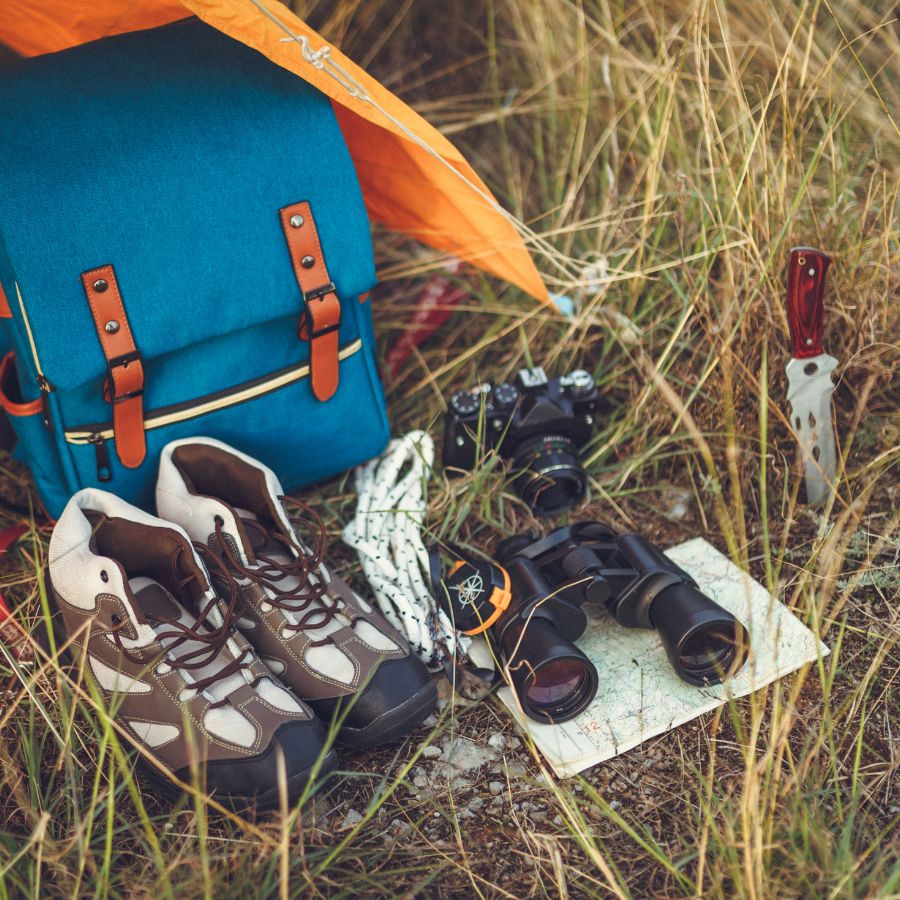
There are several items that can be carried in your foraging bag, in your pockets, or in the 5-gallon bucket of your kit. You might even consider storing everything in a 5-gallon bucket and have that become your storage vessel.
You have to remember, though, that if you are successful foraging then your bucket and foraging bag will be full. Then you will not have room for the tools and things you brought and stored inside.
Carrying a small backpack or sling bag can make all the difference. You could probably get away with a tactical war belt or tool belt that can be modified to hold things like a hori hori and some kitchen shears.
I prefer my operational security when traversing the woods, so I put my foraging tools and bag inside a KastKing sling bag. This puts all the weight on my back and makes walking long distances through the woods much easier.
Conclusion
The grave mistake new foragers make is not following the process all the way through. You might love the idea of foraging and having a bunch of great books, but the concept of going out into the world to actually pick, dig, and pluck food to bring home is lost on you.
That part of the process could also be covered up by something like fear or doubt. We all have a bit of that which tinges our desire to improve.
When you head into the woods “armed” with a forager’s toolkit, you have everything you need to emerge with a true harvest. Even if that is just a bag full of blackberries to stain your fingers on the way home and make jam.
Build your toolkit and you will be one step closer to adding foraging to the list of ways you bring healthy food into your home.
One Final Disclaimer
The information provided in this article is for general informational and educational purposes only. Foraging for wild plants and mushrooms involves inherent risks. Some wild plants and mushrooms are toxic and can be easily mistaken for edible varieties.
Before ingesting anything, it should be identified with 100% certainty as edible by someone qualified and experienced in mushroom and plant identification, such as a professional mycologist or an expert forager. Misidentification can lead to serious illness or death.
All mushrooms and plants have the potential to cause severe adverse reactions in certain individuals, even death. If you are consuming foraged items, it is crucial to cook them thoroughly and properly and only eat a small portion to test for personal tolerance. Some people may have allergies or sensitivities to specific mushrooms and plants, even if they are considered safe for others.
Foraged items should always be fully cooked with proper instructions to ensure they are safe to eat. Many wild mushrooms and plants contain toxins and compounds that can be harmful if ingested.


